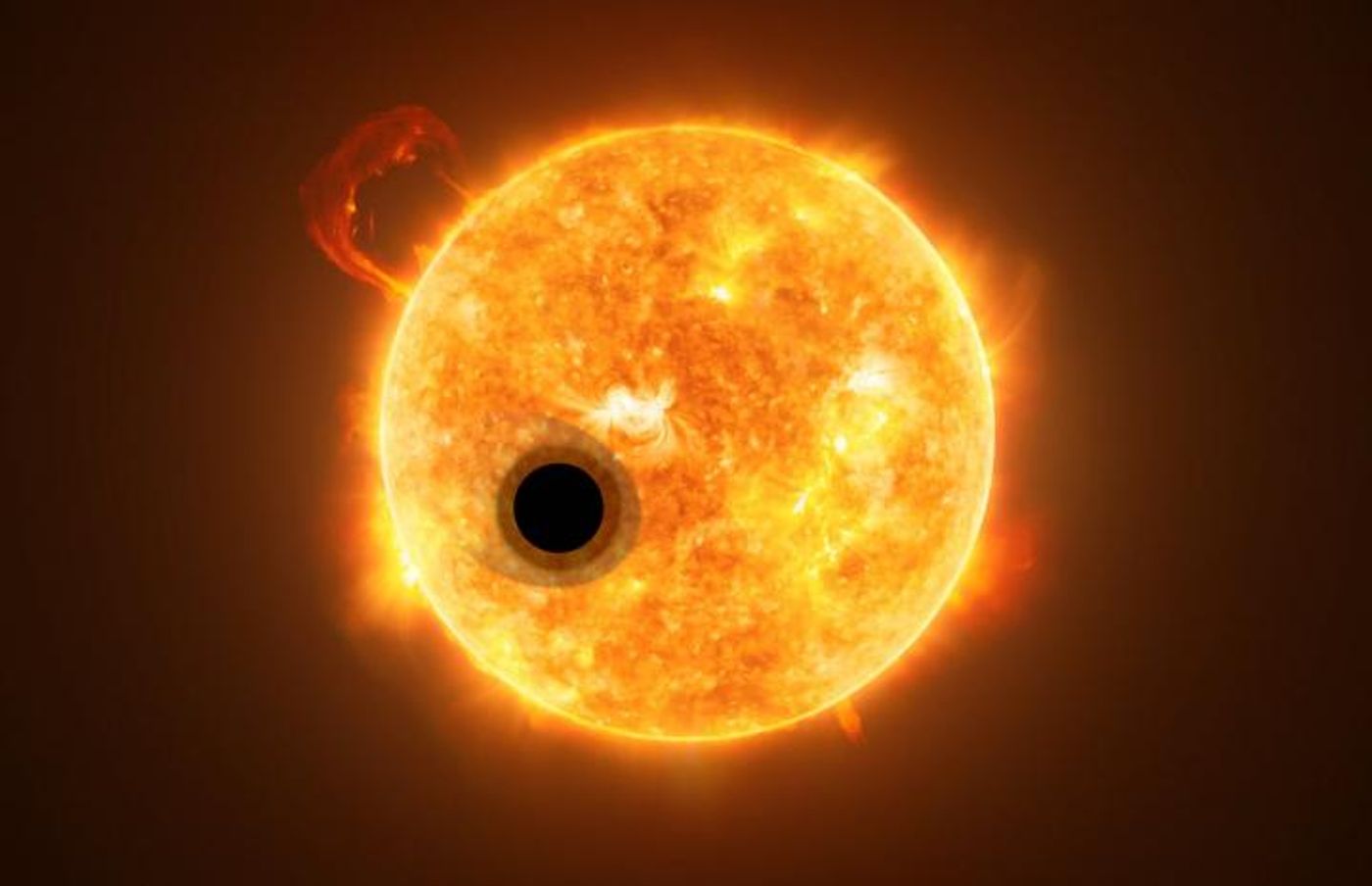Astronomers Find Helium in an Exoplanetary Atmosphere for the First Time
Determining the composition of exoplanetary atmospheres is no easy task given the sheer distance that separates them from Earth. After all, astronomers have enough trouble discerning the structure of the planetary atmospheres right here in our own solar system.
Nevertheless, an international team of researchers says they’ve discovered traces of helium in the atmosphere of a super-Neptune-like exoplanet called WASP-107b, which resides some 200 light years away from Earth. The findings appear in the journal Nature this week.
Image Credit: ESA/Hubble, NASA, M. Kornmesser
The presence of helium in WASP-107b’s atmosphere jumped out to the researchers immediately after they made observations with NASA’s Hubble Space Telescope. The helium signals were so strong that they believe the helium-rich atmosphere extends tens of thousands of kilometers into space.
"The helium we detected extends far out to space as a tenuous cloud surrounding the planet," said study co-author Tom Evans from the University of Exeter.
"If smaller, Earth-sized planets have similar helium clouds, this new technique offers an exciting means to study their upper atmospheres in the very near future."
Related: This could be one of the darkest exoplanets ever discovered
This is allegedly the first time astronomers have ever detected helium in an exoplanet’s atmosphere, which is reasonably mind-boggling given just how prevalent the element is thought to be in our universe.
The team notes that they made their discovery after examining how the host star’s light passed through the exoplanet’s atmosphere. As it would seem, the researchers seem confident that they can apply their discovery method to other known or undiscovered exoplanets.
"We hope to use this technique with the upcoming James Webb Space Telescope, for example, to learn what kind of planets have large envelopes of hydrogen and helium, and how long planets can hold on to their atmospheres," added Jessica Spake, a co-author of the study also from the University of Exeter.
"By measuring infrared light, we can see further out into space than if we were using ultraviolet light."
Related: Astronomers detect water vapor in the atmosphere of this distant Neptune-like exoplanet
WASP-107b was just discovered last year, and it’s approximately the same size as Jupiter, but with only around 12% of Jupiter’s planetary mass. Furthermore, WASP-107b orbits its host star once every six Earth days and maintains an atmospheric temperature of 500 C.
Despite its characteristics, this detection method may even work on rocky Earth-like exoplanets. It’s a theory that has yet to be tested in full, but the researchers should have sufficient time to study other exoplanets in the meantime.
Source: EurekAlert









